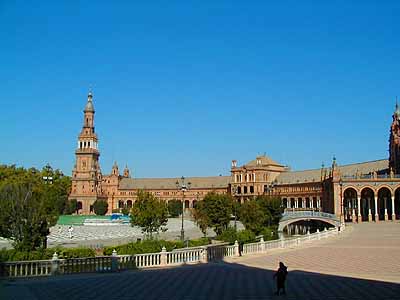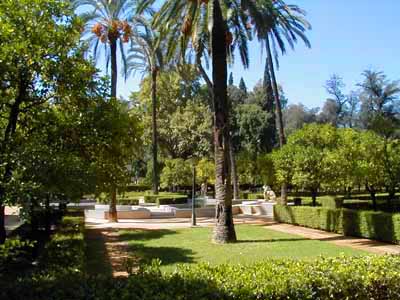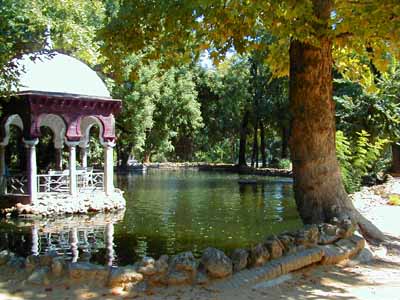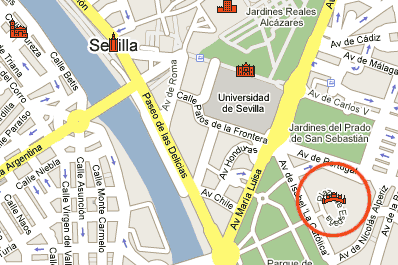
Plaza de España
In 1914, the Spanish architect Aníbal Gonzalez started with the construction works for the Ibero-American Exposition of 1929, which partly took place inside María Luisa park. The new buildings of the Plaza de España were used as the office of the fair.
The semicircular square of the Plaza de España has an artificial lake in its center and is flanked by two towers. Gonzalez chose bricks as the main material to be used, in combination with tiles and marble columns. The building's style today is called Sevillian Regionalism.

Jardín de los Leones
María Luisa park is Seville's principal green area. See the Jardín de los Leones and the Isleta de los Patos.

Isleta de los Patos
On the main square of the 1929 fair, the Plaza de America, where the Pavilion of Fine Arts was located, serves today as the Archaeological Museum of Seville.
Location
Text???
See the monument on interactive map
| Main Page | Apartments | Hotels | Activities | Monuments | Eat & Drink | Sevilla Info | City Map |